 |
|
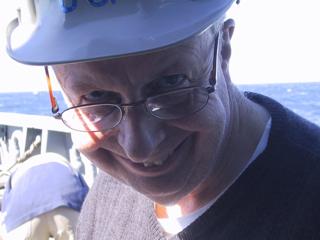 |
R.N. Edwards
Professor Development of theory and methodology of novel geophysical techniques to map the physical properties of the Earth's crust and near-surface economic zone beneath the oceans and shallow shelf seas. Telephone: 416-978-2267/5175; Fax: 416-978-7606
|
|
Brief C.V. 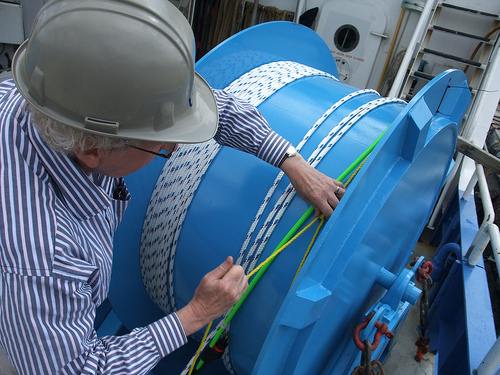
ARCS, Imperial College (1966); BSc(Special), London (1966); Royal Dutch/Shell Open Scholar, Cambridge (1966-69); PhD, Cambridge (1970); Postdoctoral Fellow, Toronto (1970-71); Research Geophysicist, Scintrex Ltd (1971-72); Appointed Assistant Professor, Toronto (1972); Cecil and Ida Green Research Foundation Scholar, IGPP, UCSD (1986); Research Associate, Scripps Institution of Oceanography (1986-88); Professor, Division of Engineering Science (1987-91); Associate Chair, Undergraduate Studies (1990-1994); Professor, Tokyo National University and Research Fellow, Earthquake Research Institute (2000-2001); J. Tuzo Wilson Professor of Geophysics, Toronto, (2007-present).
Electromagnetics was at first not high on the list of alternatives. There was a pervasive belief that the high electrical conductivity of sea water precluded the application of electromagnetic systems for exploration. Academics, including our group, had put forward methods specifically designed for the marine environment many differing in concept, instrumentation and methodology from their standard terrestrial cousins but the interest remained minimal for more than two decades, even though their specific use for hydrocarbon identification had been specifically pointed out. In The tide turned when a few surveys commissioned from universities proved very successful and in less than five years, exploration managers and investors have become aware of the importance of the science and the extensive literature. Now new highly successful contracting companies have been formed including OHM, based in Aberdeen, Scotland, which has its origins at Southampton University, UK, and EMGS, a spin-off company of Statoil, based in Norway, who learned their skills from Southampton and the Scripps Institution of Oceanography, San Diego, USA. In an investors advisory, Morgan Stanley assess the the implications of controlled source electromagnetic imaging (CSEMI) on offshore drilling, service, and field development activity will be one of the most frequently discussed topics in the oil service industry over the next twelve months. They see a growth in annual revenues from a mere $30 million to $600-900 million in less than five years - one quarter of the current spending on offshore seismic - and compare the technological revolution with the growth of 3D seismic in the early 1990s. The intense competition between contractors has generated a deluge of patent but some of these are academically fraudulent and of highly questionable legal value. My group continues to concentrate on development of novel marine electromagnetic methods from invention, through theory, experimental design, construction of suitable equipment and the collection and interpretation of marine data. The funding for the work has improved greatly through the support of commercial organisations. The current state-of-the-art and our contribution to it is summarised in review paper by Edwards(2005).
Bullseye is one of many large deposits of hydrate existing off the
west
coast of Vancouver
Island. Logs from a hole drilled through it by the Ocean Drilling Program
(IODP) Expedition 311
confirm
the existence of hydrate layers in the first few hundred meters of sediment. In some locations, the
hydrate layer exists at the seafloor itself and it has been recovered
from there by local fishers.
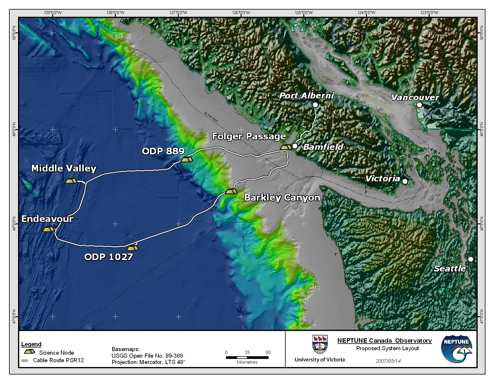 NEPTUNE Canada is a permanent,
cabled, seafloor observatory, providing power and internet to time
series instruments at nodes offshore Vancouver Island, including the Bullseye
Vent. Since gas hydrate increases both the resistivity and stiffness
of marine sediments, we have deployed two stationary semi-permanent
imaging experiments: Controlled-Source Electromagnetic (CSEM) and Sea
Floor Compliance (SFC). You can learn more about these projects from watching this presentation. NEPTUNE Canada is a permanent,
cabled, seafloor observatory, providing power and internet to time
series instruments at nodes offshore Vancouver Island, including the Bullseye
Vent. Since gas hydrate increases both the resistivity and stiffness
of marine sediments, we have deployed two stationary semi-permanent
imaging experiments: Controlled-Source Electromagnetic (CSEM) and Sea
Floor Compliance (SFC). You can learn more about these projects from watching this presentation.
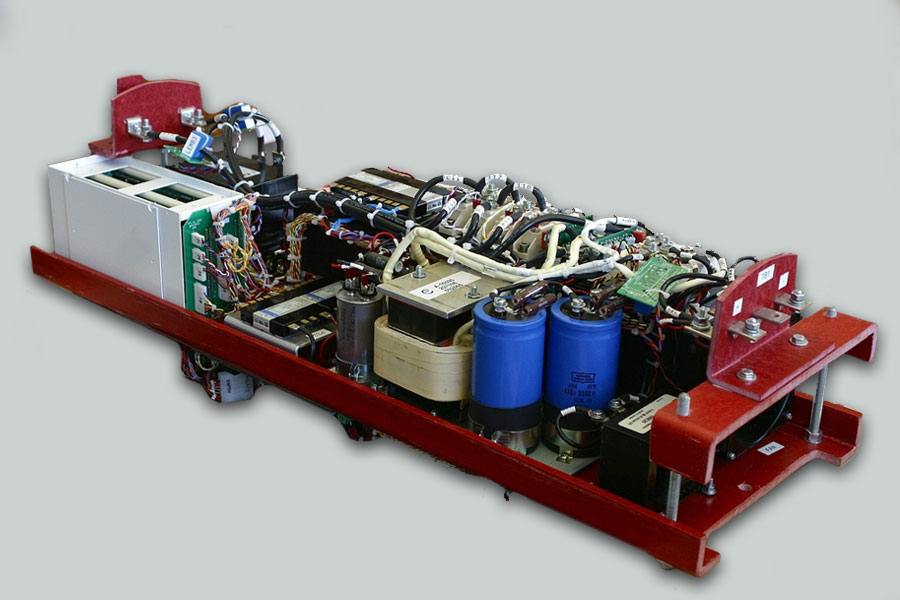
The hydrate project has been the subject of several national and international newspaper articles. It is well funded by grants and student fellowships from NSERC, NEPTUNE Canada, GSC, J. Tuzo Wilson Chair Research Fund and the Ontario Government (OGS). Research has been funded by Shell International Exploration and Production Inc., support from Fugro and in-kind donations from Scintrex Ltd. and mico-g Lacoste. From time-to-time we have joint projects with Woods Hole Oceanographic Institute, Scripps Institution of Oceanography, the Schwalenberg Institute, GEOMAR and the Geological Survey of Canada. There are opportunities for students and Post Doctoral Fellows to join the marine group to work on short-term projects. The projects available span a field from geology through theoretical classical physics to applied electrical engineering. Graduates are eagerly sought by Universities, Government Laboratories and Commercial Organisations worldwide. We require a strong undergraduate education in Classical Physics and Applied Mathematics.
Lisa Roach (PhD in progress) "Temporal Variations in Compliance of Gas Hydrate Formations" Andrei Swidinsky (PhD in progress) "Transient electromagnetic modelling and imaging of thin resistive structures" Reza Mir (PhD in progress) Ele Willoughby (PhD 2003) "Resource Evaluation of Marine Gas Hydrates using the Compliance Method"; NSERC Visting Post Doctoral Fellow in a Government Lab, Pacific Geoscience Centre (NRCan); Research Associate, University of Toronto. Jian Yuan (PhD 2003) "Electromagnetic Assessment of Off-Shore Methane Hydrate Deposits on the Cascadia Margin" ; PDF, University of Toronto; Instructor, Ryerson University. Konstantin Latychev(PhD 2001) "Numerical Modelling of Oceanic Crustal Hydrothermal Systems"; Research Associate, University of Toronto. Marion Jegen-Kulcsar(PhD 1997) "Electrical Properties of the Mantle Upwelling Zone Beneath a Mid-Ocean Ridge: An Application of Vertical Gradient Sounding"; Marie Curie Fellow, University of Brest; Research Associate, Cambridge University; Professor, University of Kiel (IFM-GEOMAR) Graeme Cairns(PhD 1997) "Development of a Short Baseline Transient Marine EM System and its Application in the Study of the TAG Hydrothermal Mound"; Chateaubriand Fellow, University of Brest; Research Associate, European Institute of Marine Studies (IUEM/CNRS); EM Geophysicist, Sander Geophysics; EM Area Geophysicist, WesternGeco Jianwen Yang (PhD 1997) "Numerical Simulation of Hydrothermal Convection within Discretely Fractured Porous Media with Application to the Seafloor"; Professor, University of Tasmania; Professor, University of Windsor. Liming Yu (PhD 1994) "Computation of Electromagnetic Responses of Mid-Ocean Ridge Structures"; Research Geophysicist, Royal Dutch/Shell, Houston. Mark Everett (PhD 1991) "Active Electromagnetics at the Mid-Ocean Ridge"; NSERC and Green Postdoctoral Fellow, Scripps Institution of Oceanography; Professor, Texas A and M University.
Post-Docs and Research Associates Carsten Scholl (PhD 2005, University of Cologne, Germany); Supervisor, Professor B?ent Tezkan; "The influence of multidimensional structures on the interpretation of LOTEM data with one-dimensional models and the application to data from Israel"; Geophysicist, Fugro Electro Magnetic GmbH Katrin Schwalenberg (PhD 2000, Free University Berlin, Germany); Supervisor, Professor Volker Haak; Die Leitfaehigkeitsstruktur der Zentralen Anden bei 21 S: Zweidimensionale Modellstudien und Untersuchungen zur Aufloesbarkeit; DFG Fellow "Controlled Source Electromagnetic Experiment for Gas Hydrate Evaluation off the Chilean Margin" Jian Yuan (PhD 2003, University of Toronto)
Ele Willoughby (PhD 2003, University of Toronto)
A. Swidinski and R.N. Edwards, 2009 The transient electromagnetic response of a resistive sheet: Straightforward but not trivial. In press, Geophysical Journal International E.C. Willoughby, K. Latychev, R.N. Edwards, R.D. Hyndman: 'Seafloor compliance imaging of marine gas hydrate deposits and cold vent structures', Journal of Geophysical Research , 113, B07107, doi:10.1029/20005JB004126, 2008. C. Scholl, R. Mir, E.C. Willoughby, R.N. Edwards, 2008. RESOLVING RESISTIVE ANOMALIES DUE TO GAS HYDRATE USING ELECTROMAGNETIC IMAGING METHODS. Proceedings of the 6th International Conference on Gas Hydrates (ICGH 2008), Vancouver, British Columbia, CANADA, July 6-10, 2008. E.C. Willoughby, R. Mir, C. Scholl, R.N. Edwards, 2008. NEPTUNE-CANADA BASED GEOPHYSICAL IMAGING OF GAS HYDRATE IN THE BULLSEYE VENT. Proceedings of the 6th International Conference on Gas Hydrates (ICGH 2008), Vancouver, British Columbia, CANADA, July 6-10, 2008. C. Scholl and R.N. Edwards, 'Marine downhole to seafloor dipole-dipole electromagnetic methods and the resolution of resistive targets', Geophysics, 72, WA39 (2007); doi:10.1190/1.24344775. K. Schwalenberg, R. N. Edwards, E.C. Willoughby, J. Yuan, G. Cairns, J. Sepulveda and J. Diaz-Naveas, 'A Controlled Source Electromagnetic Experiment to assess Gas Hydrates in Marine Sediments offshore Chile', Marine Geology, submitted, 2006 R. N. Edwards, 'Transient electromagnetic methods for sounding the crust', Encyclopedia of Geomagnetism and Paleomagnetism, David Gubbins and Emilio Herrero-Bervera editors, Earth Science Series, Springer, New York, 2007. R. N. Edwards, 'Marine controlled source electromagnetics', Encyclopedia of Geomagnetism and Paleomagnetism, David Gubbins and Emilio Herrero-Bervera editors, Earth Science Series, Springer, New York, 2007. M. Riedel, E.C. Willoughby, M.A. Chen, T. He, I. Novosel, K., Schwalenberg, R.D. Hyndman, G.D. Spence, N.R. Chapman, R.N. Edwards, Gas Hydrate on the Northern Cascadia Margin: Regional geophysics and structural framework, in Riedel, M., Collett, T.S., Malone, M.J. and the Exepdition 311 Scientists, Proc. IODP, 311: Washington, DC (Integrated Ocean Drilling Program Management Internation, Inc.) doi:10.2204/iodp.proc.311.109.2005, 2006 R.D. Hyndman, G.D. Spence, R. Chapman, M. Riedel and R.N. Edwards, 'Gas Hydrates: Geophysical studies of marine gas hydrate in Northern Cascadia', Geological Survey Canada, Earth Sciences Sector, 2005. R.N. Edwards, 'Marine Controlled Source Electromagnetics: Principles, Methodologies, Future Commercial Applications', Invited Review Paper, 17th Electromagnetic Induction Workshop, Hyderabad, India, 17th - 23rd October 2004, Surveys in Geophysics, 26, 675-700, 2005. K. Schwalenberg, E.C. Willoughby, R. Mir and R.N. Edwards, 'Marine gas hydrate signatures in Cascadia and their correlation with seismic blank zones', First Break , 23, 57-63, 2005. R.N. Edwards and K. Schwalenberg, 'Distortion of sea floor electromagnetic fields by topography', Proceedings of the Fourth Workshop on Marine Electromagnetics (MARELEC), London, March 2004, (preprint available). K. Schwalenberg and R.N.Edwards, 'Marine Controlled Source Experiments to Evaluate Gas Hydrate Deposits off the Coasts of North and South America', Proceedings of the Fourth Workshop on Marine Electromagnetics (MARELEC), London, March 2004, (preprint available). K. Schwalenberg and R.N. Edwards, 'The effect of sea floor topography: An analytic formulation for the magnetotelluric fields in the presence of a harmonic interface', Geophysical Journal International, 159, 607-621, 2004. K. Latychev and R.N. Edwards, 'On the compliance method and the assessment of three dimensional gas hydrate deposits', Geophysical Journal International, 155, 923-952, 2003. R. D. Hyndman, G. D. Spence, R. Chapman, M. Reidel, and R. N. Edwards, 'Geophysical Studies of Marine Gas Hydrates in Northern Cascadia', in Natural Gas Hydrates: Occurrence, Distribution, and Detection, Charles Paull and William P. Dillon, Eds., American Geophysical Union, Geophysical Monograph Series, 124, 2001. Jianwen Yang and R.N. Edwards, `Electric potential arising from a point source near a cylinder in layered earth structures: design criteria for a modified marine heat-flow probe', Exploration Geophysics, 32, 64-69, 2001. J. Yuan and R.N. Edwards, 'Electromagnetic Assessment of Marine Gas Hydrates on the Cascadia Margin', Proceedings of the Third Conference on Marine Electromagnetics (MARELEC), Stockholm, August 2001. G.D. Spence, R.D.Hyndman, N.R. Chapman, M. Reidel, R.N. Edwards and J. Yuan, 'Cascadia margin, northeast Pacific Ocean: hydrate distribution from geophysical investigations', in Natural gas hydrate in oceanic and permafrost environments, Max, M D. ed., Coastal Systems and Continental Margins, 5, 183-198, 2000. E.C. Willoughby, K. Latychev, R.N. Edwards and G. Mihajlovic, `Resource Evolution of Marine Gas Hydrate Deposits Using Seafloor Compliance Methods', in Gas Hydrates: Challenges for the Future, Ann. N.Y. Acad. Sci., 912, 2000. O. Matsubayashi and R.N. Edwards, `Relationship between Electrical and Thermal Conductivities for Evaluating Thermal Regime of Gas-Hydrate Bearing Sedimentary Layers', in Gas Hydrates: Challenges for the Future, Ann. N.Y. Acad. Sci., 912, 2000. G.D. Spence, R.D. Hyndman, N.R. Chapman, R. Walia, J. Gettrust and R.N. Edwards, `Review of North Cascadia Deep Sea Gas Hydrates', in Gas Hydrates: Challenges for the Future, Ann. N.Y. Acad. Sci., 912, 2000. Jian Yuan and R.N.Edwards, 'The assessment of marine gas hydrate through electrical remote sounding: Hydrate without a BSR?', Geophysical Research Letters, 27, 2397-2400, 2000. Jianwen Yang and R.N. Edwards, `Predicted groundwater circulation in fractured and unfractured anisotropic porous media driven by nuclear fuel waste heat generation', Canadian Journal of Earth Sciences, 37, 1301-1308, 2000. E.C. Willoughby and R.N. Edwards, `Shear Velocities in Cascadia From Seafloor Compliance Measurements', Geophysical Research Letters, 27, 1021-1024, 2000. R.N Edwards, Jian Yuan and G. Cairns, `Electromagnetic Assessment of Offshore Methane Hydrate Deposits on the Cascadia Margin', Proceedings of the Second Workshop on Marine Electromagnetics, (MARELEC), Brest, July 1999. R.N Edwards, and Marion Jegen, `Electromagnetic Impedance Measurements and the Evaluation of Sea Floor Conductivity Structure: A Tutorial', Proceedings of the Second Workshop on Marine Electromagnetics (MARELEC), Brest, July 1999. Jianwen Yang, K. Latychev and R.N. Edwards, `Numerical computation of hydrothermal fluid circulation in fractured earth structures', Geophysical Journal International, 135, 627-650, 1998. M. Jegen and R.N. Edwards, `The electrical properties of a two-dimensional conductive zone under the Juan de Fuca Ridge', Geophysical Research. Letters, 19, 3647-3651, 1998. E.C. Willoughby and R.N. Edwards, `On the resource evaluation of marine gas-hydrate deposits using seafloor compliance methods', Geophysical Journal International, 131, 751-766, 1997. R.N. Edwards and G. Cairns, `Marine electromagnetics and seafloor mineral exploration', Proceedings of First International Conference on Marine Electromagnetics (MARELEC), Imperial College, London, August 1997. Liming Yu and R.N. Edwards, `On crosswell diffusive time-domain electromagnetic tomography', Geophysical Journal International, 130, 449-459, 1997. R.N. Edwards, `On the resource evaluation of marine gas hydrate deposits using a seafloor transient electric dipole-dipole method.' Geophysics, 62, 63-74, 1997. Liming Yu, R.L. Evans and R.N. Edwards, `Transient electromagnetic responses in seafloor with tri-axial anisotropy.' Geophysical Journal International, 129, 300-306, 1997. G. Cairns, R. Evans and R.N. Edwards, `A time domain electromagnetic survey of the TAG hydrothermal mound.' Geophysical Research Letters, invited paper, 23, 3455-3458, 1996. Jainwen Yang, R.N. Edwards, J.W. Molson and E.A. Sudicky, `Fracture-induced hydrothermal convection in the oceanic crust and the interpretation of heat flow data.' Geophysical Research Letters, 23, 929-932, 1996. Liming Yu and R.N. Edwards, `Imaging axi-symmetric TAG-like structures by transient electric dipole seafloor electromagnetics.' Geophysical Research Letters, invited paper, 23, 3459-3462, 1996. Jainwen Yang, R.N. Edwards, J.W. Molson and E.A. Sudicky, `Three dimensional numerical simulation of the hydrothermal system within the TAG-like sulfide mound.' Geophysical Research Letters, invited paper, 23, 3475-3478, 1996. S.C. Webb and R.N. Edwards, `On the correlation of electrical conductivity and heat flow in Middle Valley, Juan de Fuca Ridge.' Journal Geophysical Research, 100, 22,523-22,532, 1995.
From time-to-time we release software of interest to our
colleagues.The
software can be accessed through the address of this web page with
the switch /software added to it.
|
|
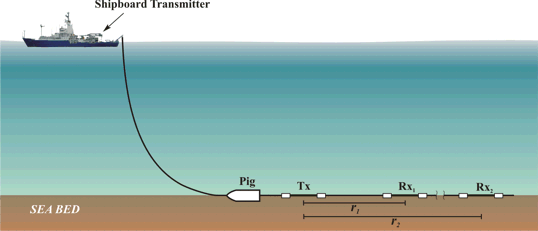 Twenty years ago, we wrote that
while electromagnetic exploration of the solid earth had
advanced substantially in academic circles, the
adoption of the technology by oil and gas companies
was slow. Up until 2000, little changed even though
Twenty years ago, we wrote that
while electromagnetic exploration of the solid earth had
advanced substantially in academic circles, the
adoption of the technology by oil and gas companies
was slow. Up until 2000, little changed even though  One target of particular interest to the group is the mapping and assessment
of Gas Hydrates. By way of example, consider the survey off the west coast
of
Vancouver Island, Canada presented by
One target of particular interest to the group is the mapping and assessment
of Gas Hydrates. By way of example, consider the survey off the west coast
of
Vancouver Island, Canada presented by 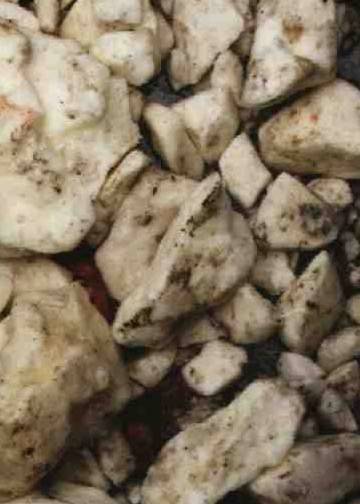 The target area is
located on the accretionary prism of the Cascadia margin
over a vent field characterised by the occasional absence of clear
signatures
on the seismic section. The field covers
an area of roughly 1 km x 3 km. The largest, blank zone is
called the Bullseye vent and has a sea floor diameter of about 400
m. A resistivity anomaly is visible along
a survey profile which is in striking agreement with the sea floor
projection of the Bullseye site. Methane
hydrate,
like ice, is electrically insulating. Deposits of hydrate
in porous sediment cause an increase in the formation resistivity that may be
interpreted in terms of hydrate content. The survey result
is remarkable given the uncertainty of order 100 m in the
relocation of receiver positions from the GPS ship positions,
water depth and cable length readings. The resistivity values
within the anomalous zones rise up to 5 ohm m over
the regional background, which lies between 1.1 ohm m and
1.5 ohm m. The gas hydrate concentrations derived from the
resistivity profile exceed
50% at maximum and about 25% on average of the available pore
space. Assuming that
the increase in resistivity is due to a higher hydrate
concentration, the latter may be converted to total mass of
hydrate and then to total available methane. A rough estimate can
be made for the Bullseye vent assuming a cylindrical volume, with
diameter and depth of 400 m and 200 m respectively. Twenty five
percent of the available pore space corresponds to 3.8 million
cubic metres. With a solid to gas ratio of hydrate of 1:164, the
related methane gas volume at STP is 0.62 billion (US) cubic
metres
The target area is
located on the accretionary prism of the Cascadia margin
over a vent field characterised by the occasional absence of clear
signatures
on the seismic section. The field covers
an area of roughly 1 km x 3 km. The largest, blank zone is
called the Bullseye vent and has a sea floor diameter of about 400
m. A resistivity anomaly is visible along
a survey profile which is in striking agreement with the sea floor
projection of the Bullseye site. Methane
hydrate,
like ice, is electrically insulating. Deposits of hydrate
in porous sediment cause an increase in the formation resistivity that may be
interpreted in terms of hydrate content. The survey result
is remarkable given the uncertainty of order 100 m in the
relocation of receiver positions from the GPS ship positions,
water depth and cable length readings. The resistivity values
within the anomalous zones rise up to 5 ohm m over
the regional background, which lies between 1.1 ohm m and
1.5 ohm m. The gas hydrate concentrations derived from the
resistivity profile exceed
50% at maximum and about 25% on average of the available pore
space. Assuming that
the increase in resistivity is due to a higher hydrate
concentration, the latter may be converted to total mass of
hydrate and then to total available methane. A rough estimate can
be made for the Bullseye vent assuming a cylindrical volume, with
diameter and depth of 400 m and 200 m respectively. Twenty five
percent of the available pore space corresponds to 3.8 million
cubic metres. With a solid to gas ratio of hydrate of 1:164, the
related methane gas volume at STP is 0.62 billion (US) cubic
metres